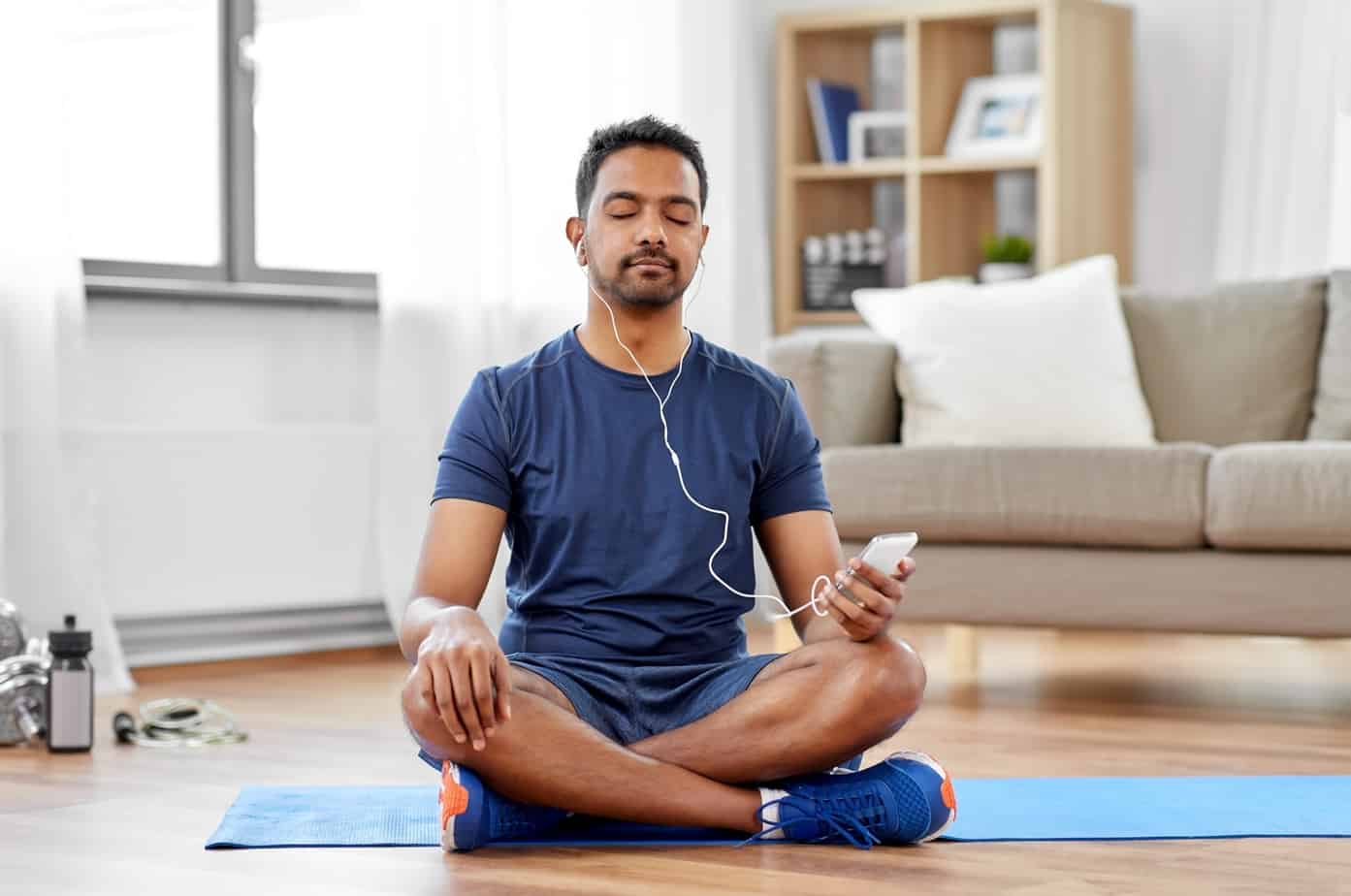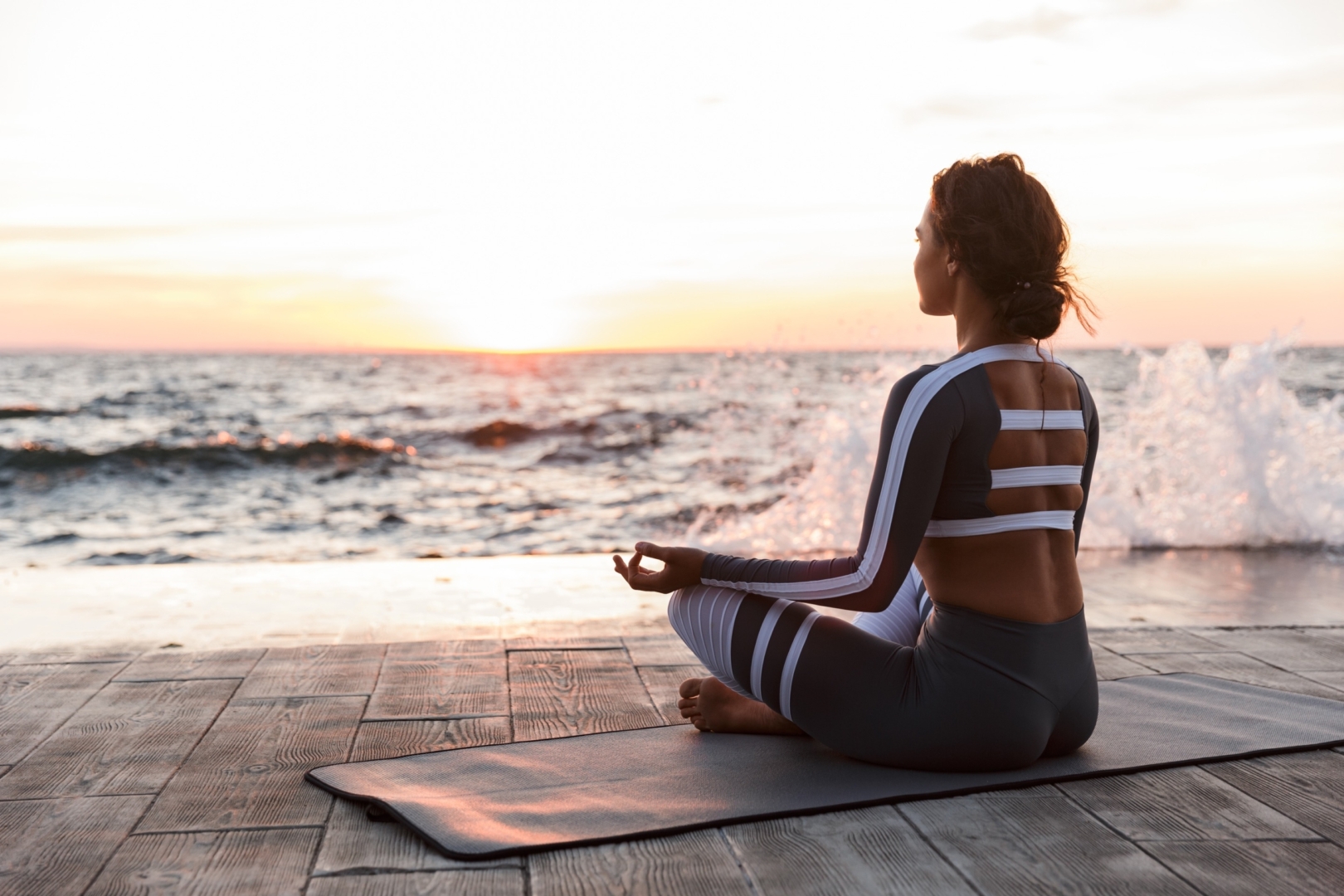Can meditation actually improve sports performance?
There is good evidence that meditation can play a role in helping athletes achieve a better state of mind when they’re competing, and this translates well across a variety of sports.
Sports meditation: Yes, no, maybe or sometimes?
Sports stars can be a strange bunch. I suppose it’s fair to say that anyone who is at the top of their industry can behave a little differently to the rest of us (Bezos, Elon and Zuck, I’m looking at you). Sports stars are certainly no different to this rule and whether it’s superstitions around what they eat before they compete, a persona they adopt when they cross the white line, or a desire to be super hyped (Conor McGregor) or calm (Kimi Räikkönen) before they compete, most will have practices they adopt to help them feel ready.
In recent years one of the best pole vaulters in the world has been Yelena Isinbayeva. Between rounds she would lay quietly with a towel over her head with commentators joking she was having a nap. If you’re a ‘get as hyped up as possible’ person you would probably see that and think that she couldn’t be successful, but she was. With two Olympic golds and seventeen World Records, I’m certainly not going to argue with her.
Isinbayeva isn’t the only individual to adopt such tactics either. In tennis we often see players with towels over their heads as they sit quietly between games. Often this includes top players, and their successes suggest that we don’t all need to be shouting and screaming to achieve at the sharp end. Who really knows what’s going on in their heads while the towel is on but with the rise of the use of sports psychologists, it’s not a big stretch to think that some kind of self-talk, focusing and meditation may be happening.
As I mention psychologists it’s time for a disclaimer: I am not one – at all! I am a physiologist. But I’m a physiologist who is interested in helping athletes to maximise their performances. And as such I’m interested in the potential physiological impact of psychological techniques such as meditation. So, let’s learn together and see what the supposed benefits of meditation are, how they affect us physiologically and whether there’s a place for them in our own practice.

First things first – what is meditation?
You probably have an idea for yourself but first of all, what are we actually talking about when we refer to meditation? Historically, I think when people hear the word they will think of mystics sitting cross legged searching for enlightenment. There is likely good reason for this, with evidence of meditation stretching as far back as around 3500 years! More recently we might think of lycra-clad Californian guys and girls searching for their own inner peace between chai lattes.
The actual definition of meditation is quite broad though, being described as a practice of focusing the mind on a particular thought or activity to achieve mental clarity and/or emotional calm. The actual techniques used to practise this are quite varied, but we’ll get to that later.
Benefits of meditation
So, we’ve said that meditation is supposed to help us achieve calm, clarity and a relaxed state. It has also more specifically been shown to lower stress and decrease anxiety, which obviously might be useful in sport. It has also actually been suggested to be able to alter the physical structure of the brain, which I find particularly amazing. This is supposed to be achieved via potentially being able to increase the mass of the corpus callosum and hippocampus, which are responsible for the communication of information between the left and right sides of the brain. They are also important in forming and recalling memories and controlling our emotions. If this is the case, then meditation might be able to help with solving problems, learning skills, and making decisions, which would be very useful for many sportspeople.
Meditation in an athletic setting
So, as always, let’s look into the research to see whether some of these big claims are true. Is meditating going to make us better at our sports? Perhaps it depends on our sport of choice. More stress-based sports such as golf might benefit more from a calmer mind, as those athletes consider and execute shots, compared to the more chaotic goings on of a rugby field. This might be where our meditation style should be considered. Focused attention meditation (FAM) requires the individual to focus on a specific action or object, such as their breathing. This can help to eliminate distractions and aid skills like sinking a crucial putt. The other type of meditation we’ll consider is open monitoring meditation (OMM). This is much more suited to more open sports as it allows focus on all internal and external input before decisions can be made. This type of meditation weakens the focus on the task, as there is so much else going on, but can be more appropriate in these more open type sports.
But does meditation actually work? Well, the evidence in closed sports (sports performed in a stable or largely predictable environmental setting, such as archery, golf, or field events like throwing the javelin) is pretty strong. Following an extended period of integrating meditation into normal training, golfers have been found to improve their performance across a season. It is thought this happens by identifying the right things to focus on.
This may not be surprising though given the kind of sport it is and the benefits of remaining calm, relaxed and focused on the task. The good news is that in a soccer task where meditation was used twice a week for six weeks, shooting performance improved here too. The exact mechanism of these performance benefits are uncertain though it likely shows how meditation can play a part in the toolkit of improved sports performance.
Another potential mechanism behind the successes of meditation is the ability to achieve a state of ‘flow’. Flow is that feeling where you’re ‘in the zone’ and not needing to think about the task at hand. You’ve likely heard sportspeople talk about it in interviews after exceptional performances, though often you and even them don’t know that it’s happened: “Yeah, to be honest I can’t really remember too much of the match!”; “That final set was all a bit of a blur!”; “Looking back on the race now I couldn’t even really tell you that much about it!”. This would be flow. It can manifest as a loss of concept of time, reduction in self-consciousness, a focus on the present and a sense of effortlessness in your endeavours. If only we could bottle it! But it seems meditation can help us find it easier to achieve. This is also backed up by the research and linked to decreases in pessimism.
This sadly isn’t something we can likely tap into in one session though. It seems that at least three weeks seems to be around the point where performance benefits begin to manifest. This isn’t to say there will be no performance benefits at all or no other kind of benefits. Here we come back to two themes that seem to be a running trend in sports science topics – ‘it’s individual’ and ‘the placebo effect’. We need to remember that scientific studies use what we call a sample. This means that maybe 10, 20 or 50 individuals are used in a study to allow the outcomes to be expressed as if they are likely for the whole population. That is why the average response across the whole sample is reported. Some people will respond better, some worse. The bigger the sample the better, as it’s more representative of the population as a whole. You might be one of the good responders and it might only take a week for you to benefit from meditation. On the other hand, you might be a bad responder and it might be longer before you feel a benefit.
The other ever present is the potential for the placebo effect to impact our performance – the placebo effect is real too, there is no doubt about it. If you feel you’re getting a benefit from a practice then you are! And you should keep doing it. If that’s the case for meditation for you then great. At least you can do it for free! Meditative techniques such as focusing on your breathing will also certainly have an effect on your state of calm. This might not directly help you to sink the championship-winning free throw, but it certainly won’t hurt.

Meditation techniques
So, if we think this might be something we’d like to trial, how do we actually go about doing it? If you want some help, there are plenty of apps out there that can help to lead you through it but really it doesn’t have to be too complicated. If you want to keep it simple then you can sit somewhere quiet (you don’t need to be cross-legged!) and concentrate on your breathing. The reason behind using your breathing as an anchor is that thinking of nothing (which is often what people think of as the aim of meditation) is very hard! In fact, even focusing on your breathing is hard. So perhaps start with just three minutes and gradually build it up towards the 20 minute mark.
It’s also recommended by many to do it first thing in the morning – pre-emails, pre-coffee, pre-teeth brushing. This allows you to hopefully focus before your brain starts being pulled all over the place! There are many meditation techniques, and I would advise you perhaps to trial a few to see what you feel most comfortable with.
Take-home points on sports meditation
It feels a lot of my blogs aren’t able to provide strong evidence to back up the use of the technology or practice we’re discussing. It seems today though that we are on sturdier ground – there is good evidence that meditation can play a role in helping athletes achieve a better state of mind when they’re competing. This translates well across a variety of sport types to lead to improved performance. Will it work for everyone? Of course not – not much does, but I would certainly recommend giving it a go. Just keep in mind you likely need a decent level of commitment to it as potentially you’ll feel little benefit initially.
But for a technique that can be practised very cheaply, with low time commitments and no physical effort, what are the downsides? Perhaps there’s a reason it’s been around for thousands of years!



